The Alpine chamois, whose pictures below are taken in the Swiss Alps, is the smallest species of the Caprinae (including bighorn sheep and ibex).
From the Alps to Anatolia and Azerbaijan, through the Vosges, Jura, Massif Central, the Balkans and Carpathians, there are six subspecies of chamois in rocky areas, forests, and pastures.
The isard (also izard) is a related species of the chamois of the Alps, and lives in the Pyrenees, the Italian Apennines and the Cantabrian mountain range.
An adult chamois (Rupicapra rupicapra) male measures around 1.30m from nose to tail, and about 75 inches at the withers. Its weight varies between 25 and 60 kg (maximum weight in autumn and halved at the end of winter).
The horns of the chamois can be up to about 27 centimeters for males.
Females have a smaller morphology and smaller horns.
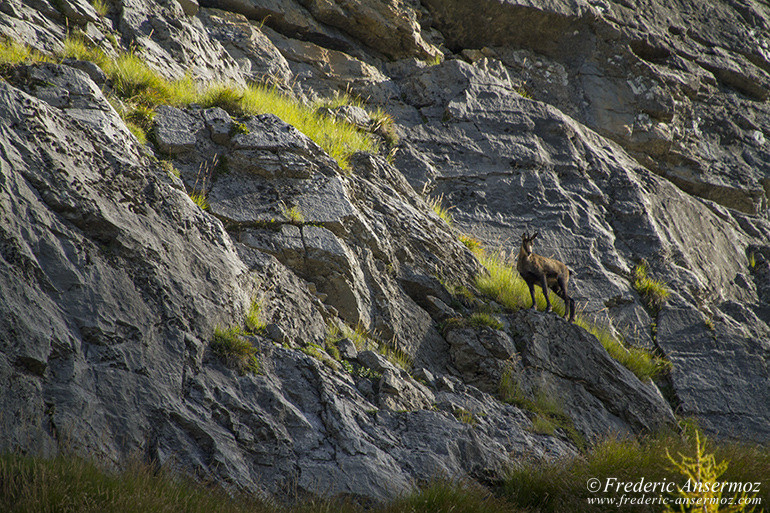
F7.1, 1/800 sec, 500 mm, ISO400, Canon EOS 7D
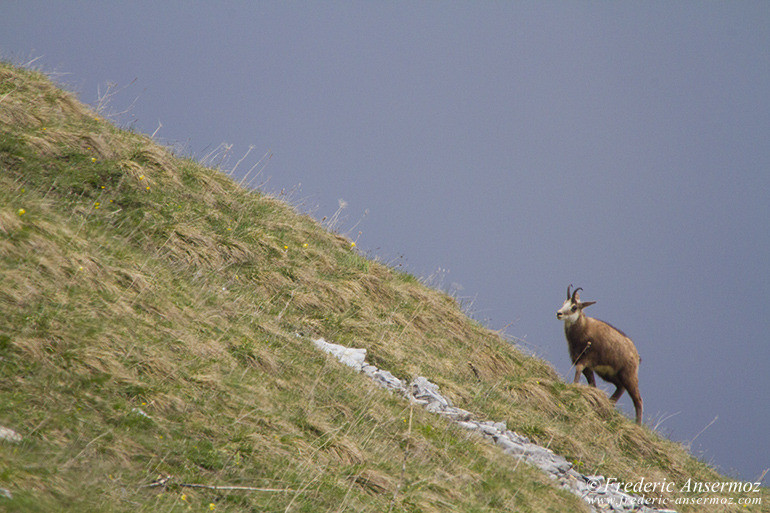
F6.3, 1/800 sec, 500 mm, ISO800, Canon EOS 7D
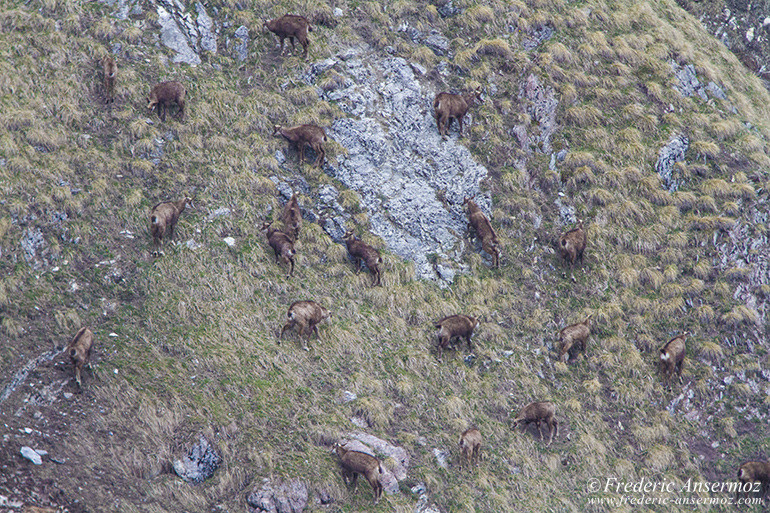
F6.3, 1/400 sec, 287 mm, ISO1250, Canon EOS 7D
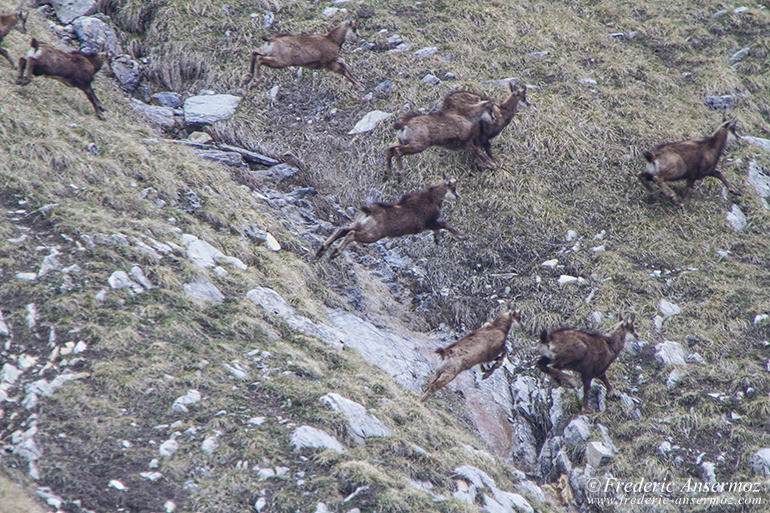
F6.3, 1/400 sec, 500 mm, ISO1250, Canon EOS 7D
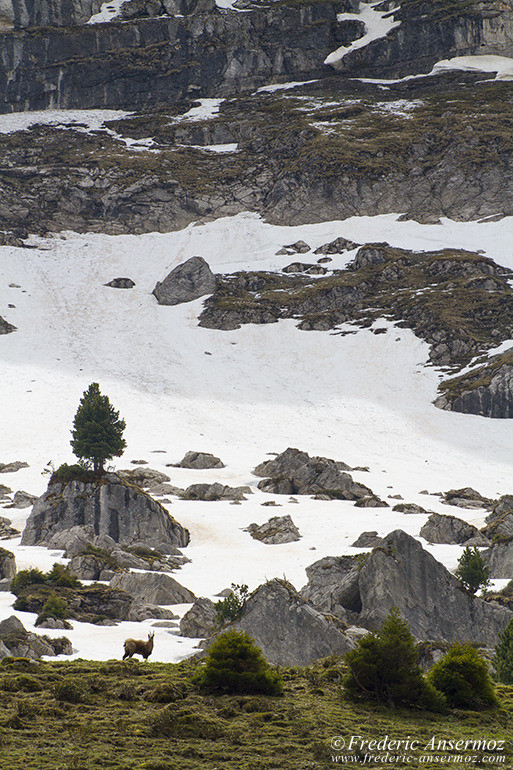
F8, 1/2000 sec, 244 mm, ISO800, Canon EOS 7D
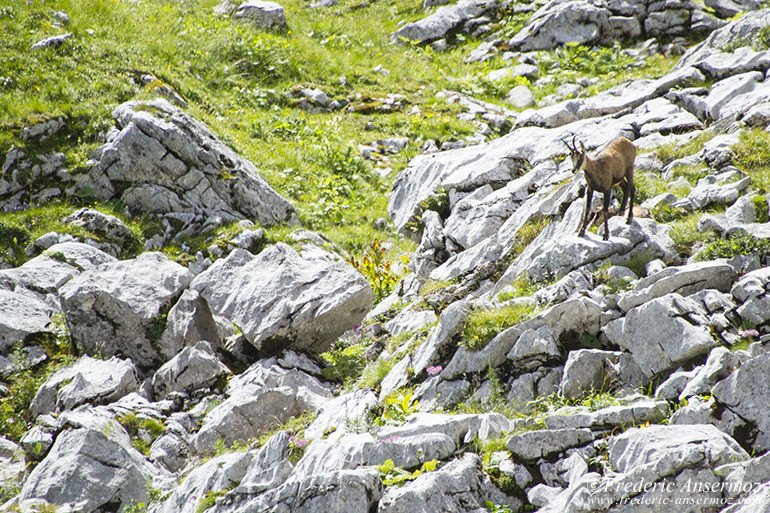
F6.3, 1/800 sec, 500 mm, ISO640, Canon EOS 7D
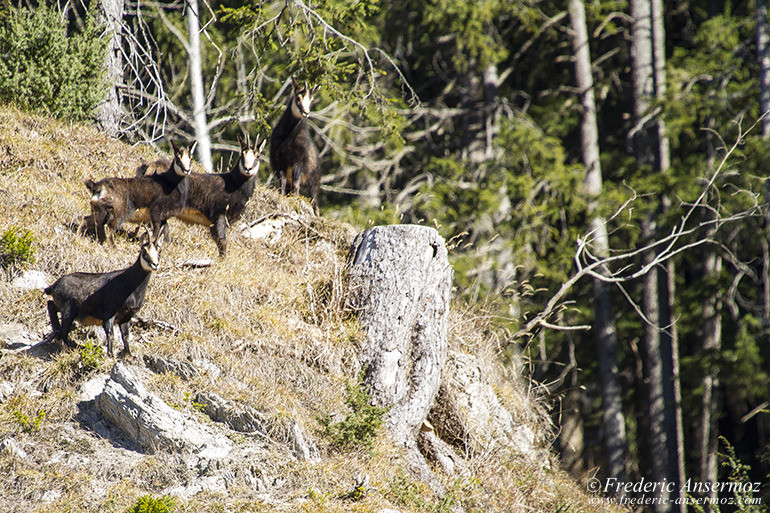
F7.1, 1/400 sec, 500 mm, ISO800, Canon EOS 7D
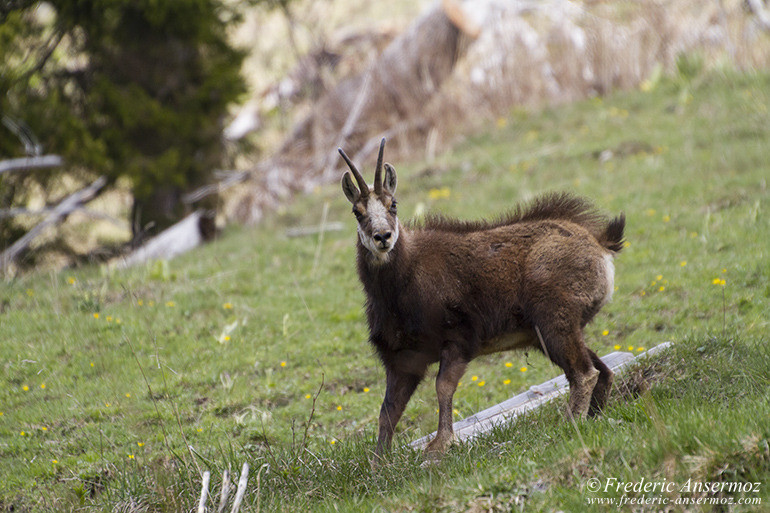
F6.3, 1/1000 sec, 332 mm, ISO800, Canon EOS 7D
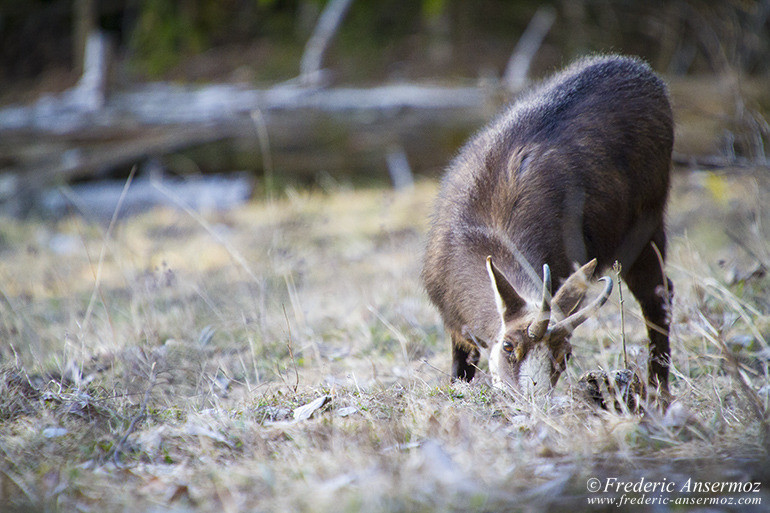
F6.3, 1/160 sec, 500 mm, ISO1600, Canon EOS 7D
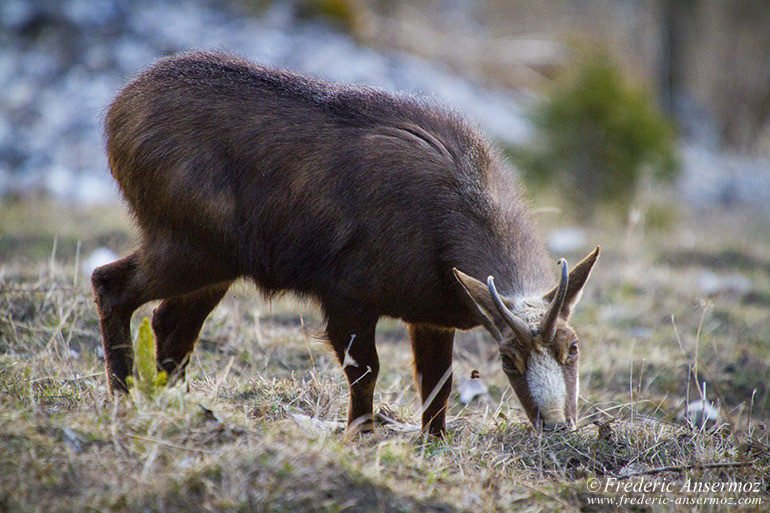
F6.3, 1/320 sec, 500 mm, ISO1600, Canon EOS 7D
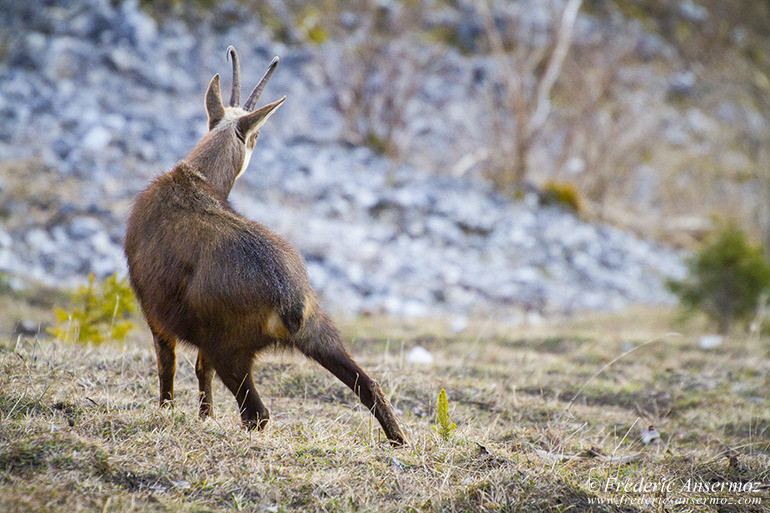
F6.3, 1/320 sec, 287 mm, ISO1600, Canon EOS 7D
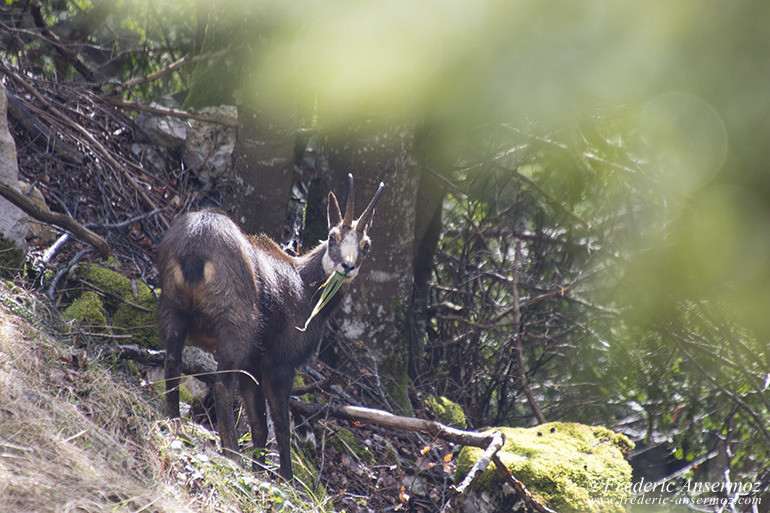
F6.3, 1/130 sec, 500 mm, ISO250, Canon EOS 7D Mark II
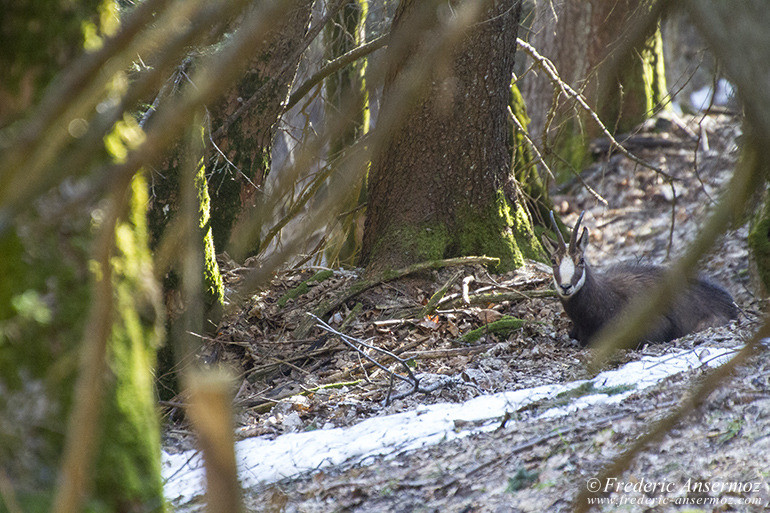
F6.3, 1/160 sec, 413 mm, ISO3200, Canon EOS 7D
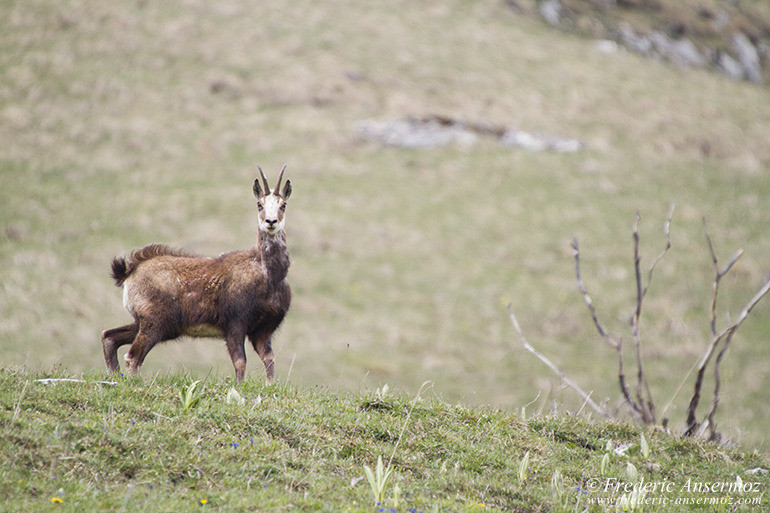
F6.3, 1/800 sec, 450 mm, ISO800, Canon EOS 7D
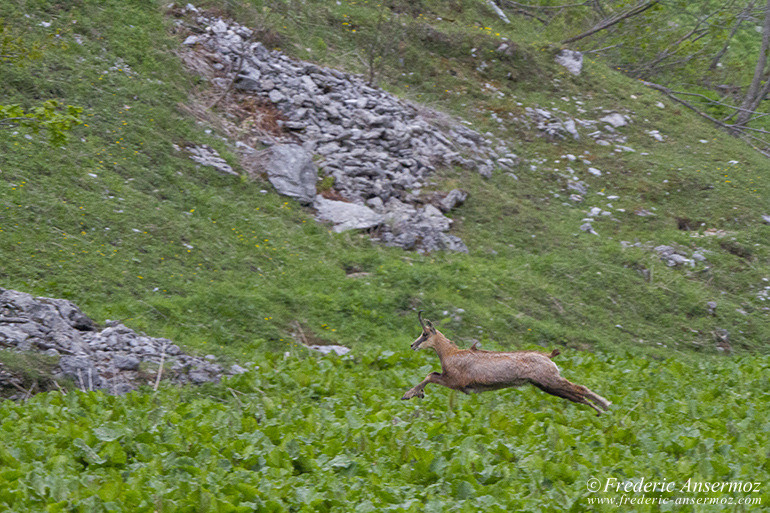
F5.6, 1/320 sec, 138 mm, ISO3200, Canon EOS 7D
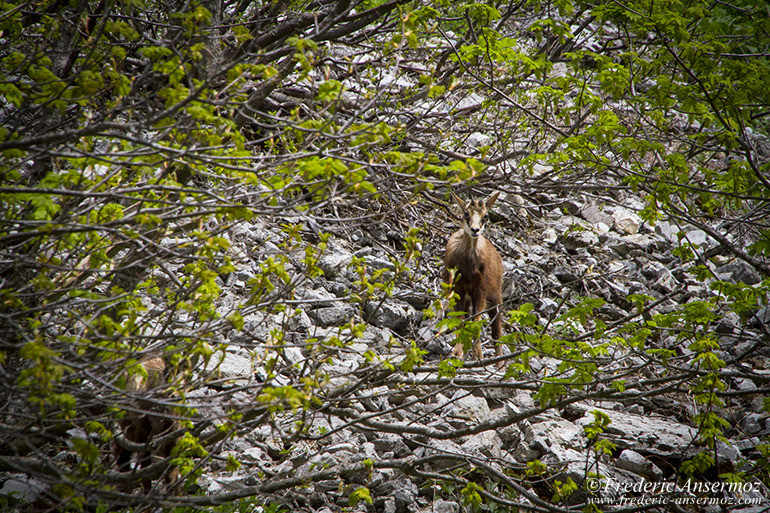
F16, 1/640 sec, 500 mm, ISO800, Canon EOS 7D
The chamois can live up to 25 years. In most cases, its life not exceed 15 or 16 years, reaching the stage of old age at 10 years old. Their fur becomes grayish and the wear of their teeth gradually prevents them to feed.
Some information that will help wildlife photographers and observers, if you want to see the Alpine chamois, while respecting it.
His life cycle across the seasons:
– In winter, food is scarce and snow cover is thick, the chamois stays in forests, where it finds protection.
– During spring, the chamois begins to reach the heights and change his fur. Then comes the period of birth (late May / early June). From 0 to 4 years old, the young male chamois is called ‘eterlou’, and the female ‘eterle’.
– In summer there is plenty of food, and the chamois starts to store food. The chamois rarely drinks, so he avoids sunlight areas
– In autumn, after changing fur it’s the mating season (rut).
During the day, chamois alternates feeding and resting. He is still quite active in the morning and late afternoon.
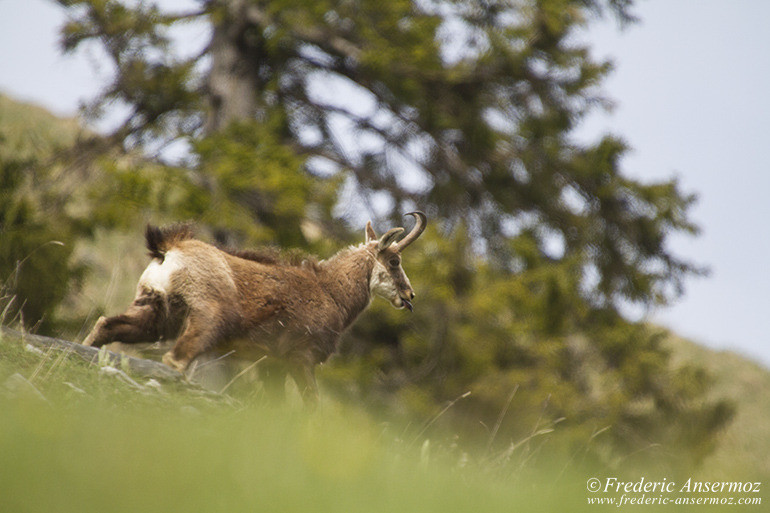
F6.3, 1/2000 sec, 500 mm, ISO800, Canon EOS 7D
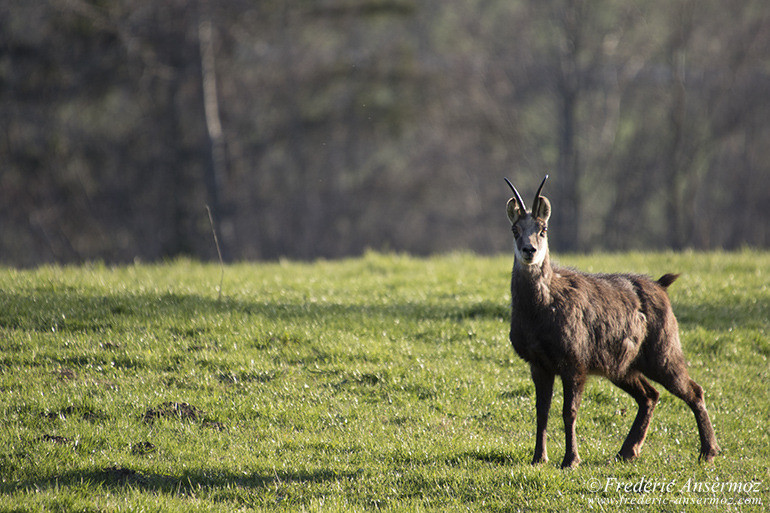
F6.3, 1/320 sec, 500 mm, ISO320, Canon EOS 7D Mark II
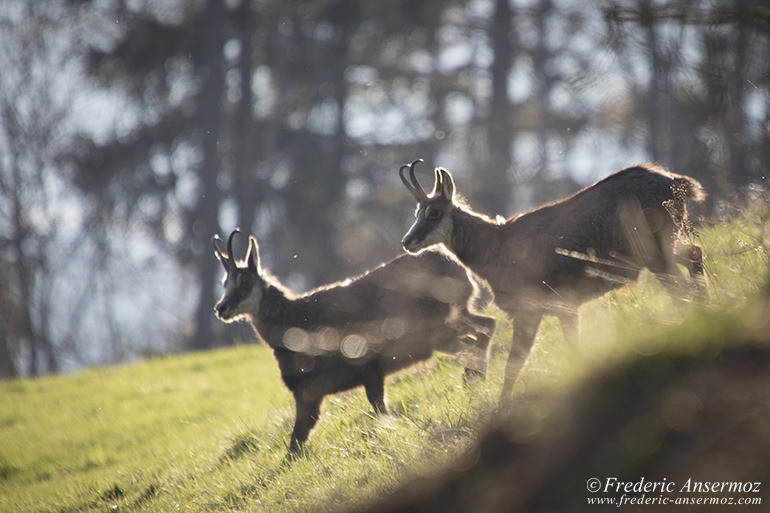
F6.3, 1/250 sec, 500 mm, ISO320, Canon EOS 7D Mark II
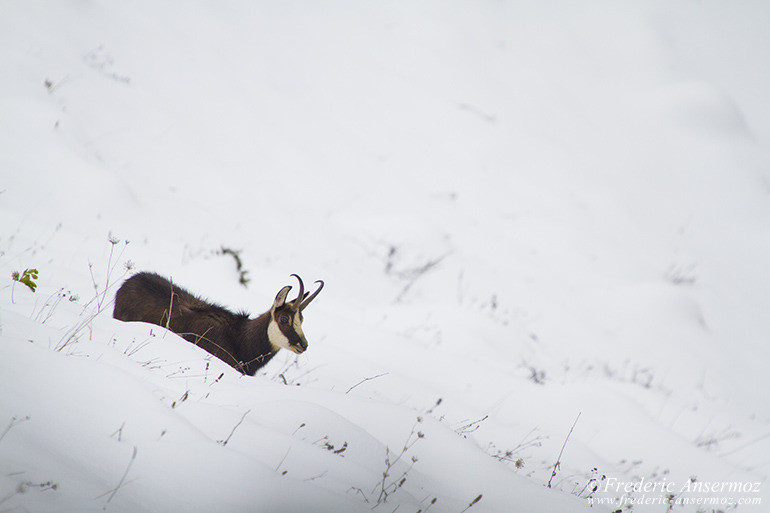
F7.1, 1/500 sec, 500 mm, ISO320, Canon EOS 7D
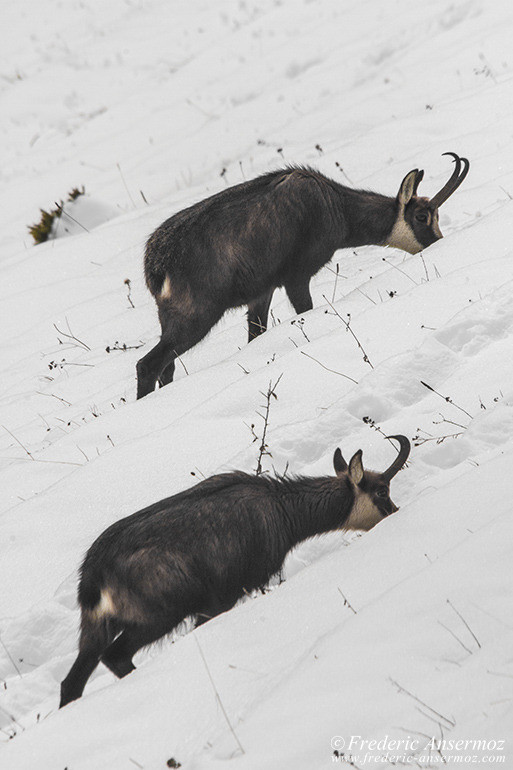
F10, 1/500 sec, 500 mm, ISO1250, Canon EOS 7D
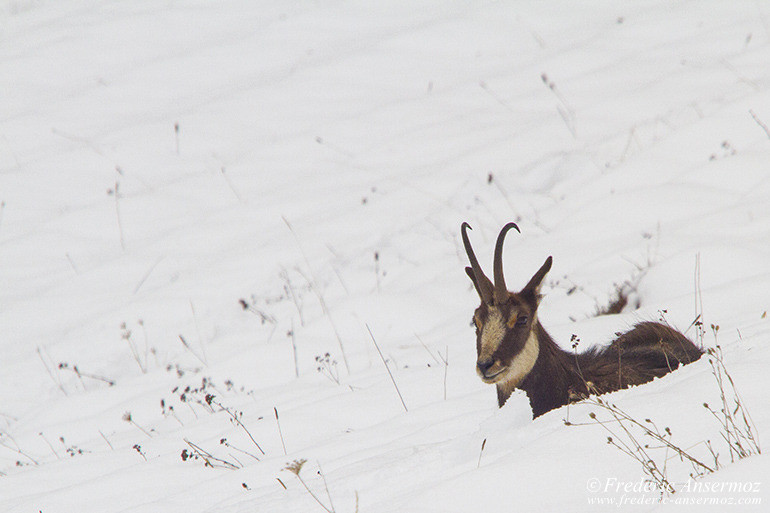
F10, 1/500 sec, 500 mm, ISO1250, Canon EOS 7D
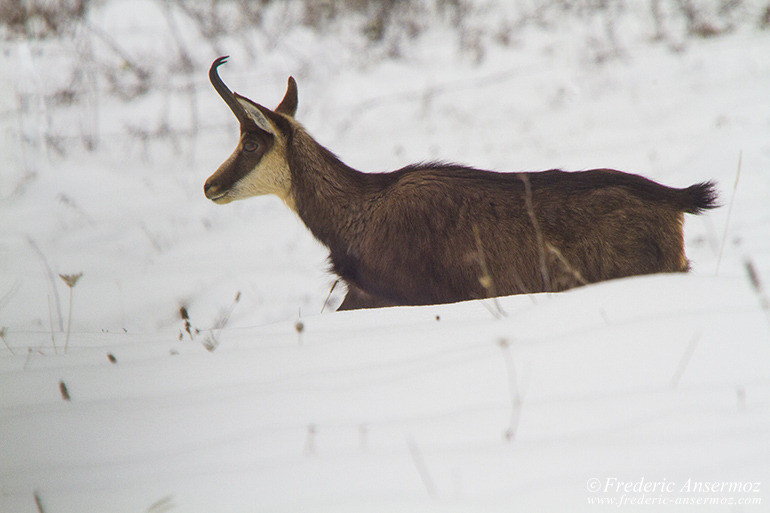
F10, 1/500 sec, 500 mm, ISO1250, Canon EOS 7D
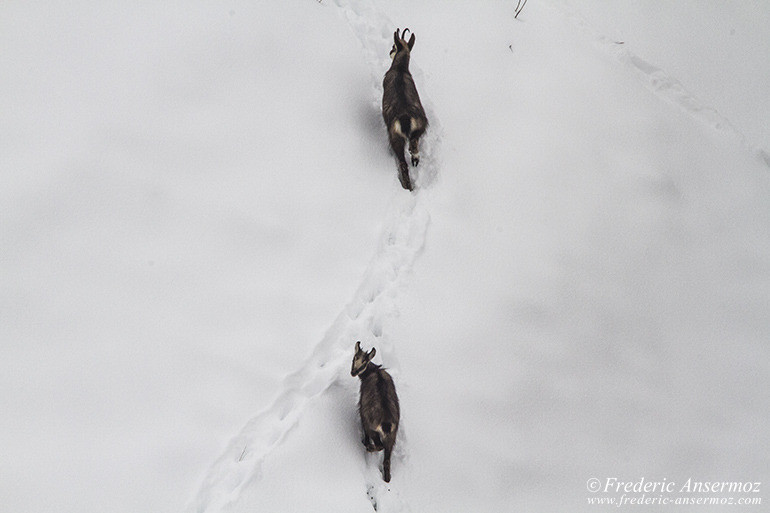
F10, 1/500 sec, 287 mm, ISO1600, Canon EOS 7D
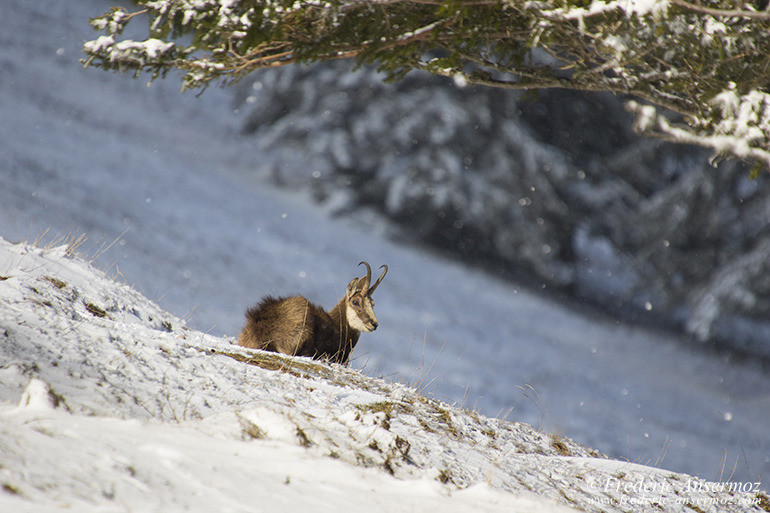
F6.3, 1/2000 sec, 500 mm, ISO400, Canon EOS 7D Mark II
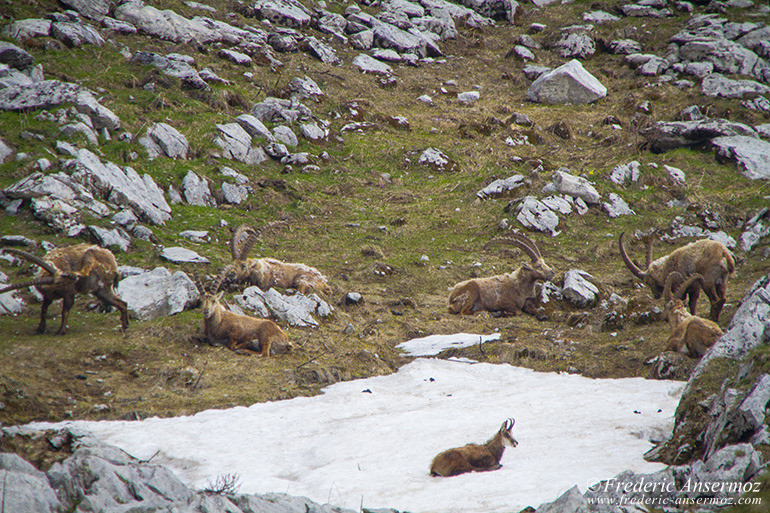
F6.3, 1/400 sec, 500 mm, ISO1250, Canon EOS 7D
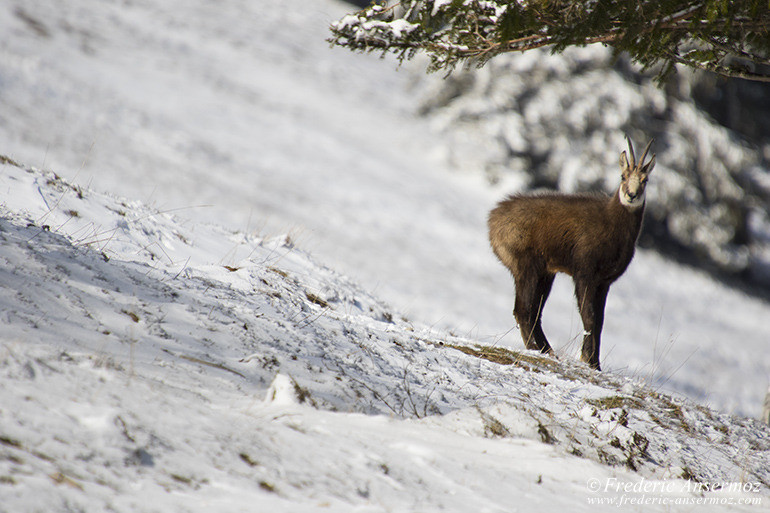
F6.3, 1/3200 sec, 500 mm, ISO400, Canon EOS 7D Mark II
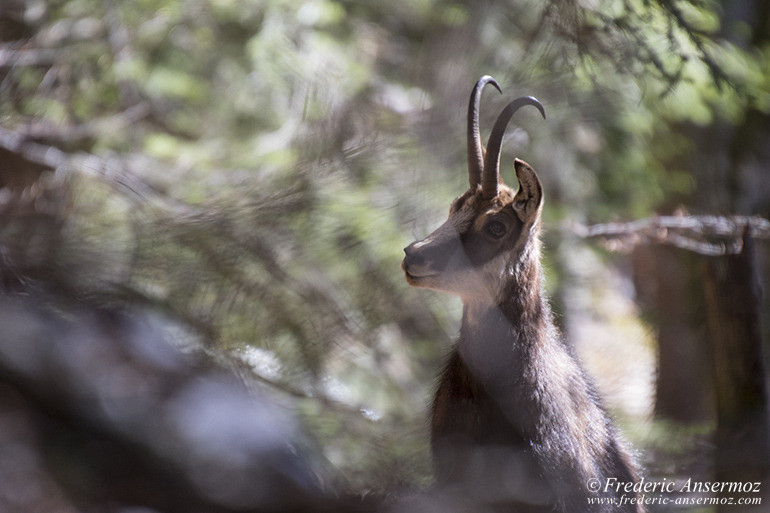
F6.3, 1/320 sec, 373 mm, ISO800, Canon EOS 7D Mark II
The Alpine chamois is quite difficult to approach in the wild. Pretty shy, he runs away at the slightest unusual noise. Rub your sleeve to a trunk or branch, and your silent approach is ruined.
If the wind is favorable, the chamois can smell you over more than 500 meters. At this distance, the view of the chamois allows him to distinguish movements, even in the dark. However, it’s hard for him to identify what is still, near or far.
So if you make an approach rather than waiting in a hide, you need to be patient and train well your legs and calves muscles, for the times when you stand still in a weird position…
Hold on to follow him, chamois has a bigger heart and lungs than men and up to 5 times more red blood cells … In a word, do some sport :)
I hope my article and my photos of Alpine chamois in the Swiss Alps will please you and will allow you to learn more about this animal of our mountains.
Remember to avoid to make him run away in winter.
